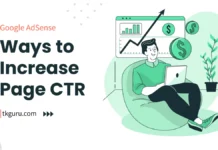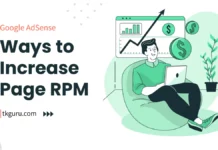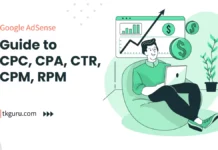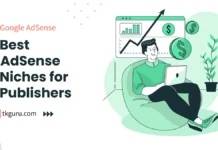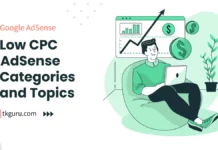Advertisements
Ratings
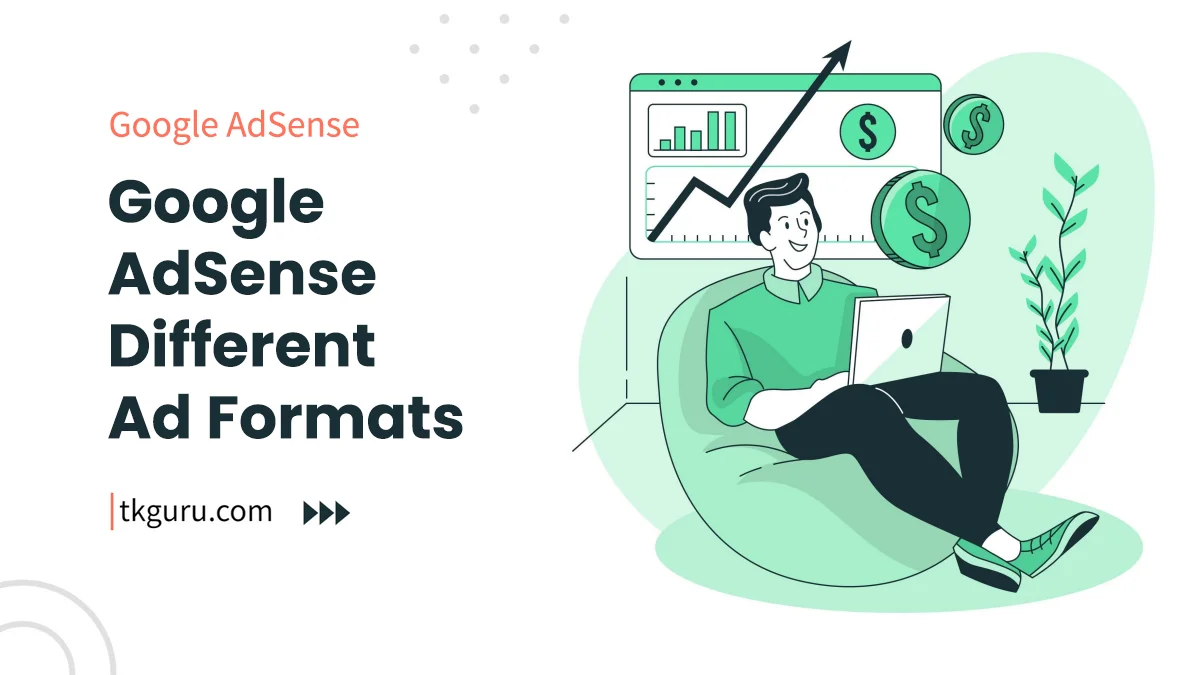
Different Ad Formats in Google AdSense – In the ever-evolving landscape of online monetization, Google AdSense remains a beacon of opportunity for website owners, bloggers, and content creators.
One of the crucial aspects that contribute to AdSense’s success is the variety of ad formats it offers. Ad formats play a pivotal role in optimizing user experience and revenue generation.
This guide delves into the diverse ad formats available in Google AdSense, helping you understand their features, benefits, and how to leverage them effectively for maximum monetization.
Contents
Different Ad Formats in Google AdSense
1. Text Ads
Text ads are a cornerstone of digital advertising, renowned for their simplicity and seamless integration with website content.
These ads consist of a headline, description, and a URL. Their unobtrusive nature and ability to blend with surrounding text make them a popular choice for many publishers.
Key Features of Text Ads
| Feature | Description |
|---|---|
| Unobtrusive Appearance | Text ads blend seamlessly with content. |
| Contextual Relevance | Ad content matches the context of the page. |
| Higher Click-Through Rate | Text ads often receive more clicks due to relevance. |
Table 1: Key Features of Text Ads
Example of Text Ad
Text Ad Example
Text ads are effective for maintaining a cohesive user experience while generating revenue through user engagement.
2. Display Ads
Display ads are visually appealing and come in various sizes and formats. These ads can include images, graphics, animations, and even interactive elements.
Display ads are known for their ability to capture attention and convey messages effectively.
Advantages of Display Ads
| Advantage | Description |
|---|---|
| Visual Impact | Display ads attract attention with visuals. |
| Diverse Formats | Multiple size options cater to different design needs. |
| Message Delivery | Graphics and images convey messages effectively. |
Table 2: Advantages of Display Ads
Example of Display Ad
Display Ad Example
Display ads are versatile and can be customized to match your website’s design and content.
3. Responsive Ads
Responsive ads are designed to adapt seamlessly to various screen sizes and devices.
These ads automatically adjust their size and appearance to provide an optimal viewing experience on desktops, tablets, and mobile devices.
Benefits of Responsive Ads
| Benefit | Description |
|---|---|
| Cross-Device Consistency | Ads look great across different devices. |
| Simplified Management | A single ad unit works for various screen sizes. |
| Improved User Experience | Users enjoy consistent ad visibility. |
Table 3: Benefits of Responsive Ads
Example of Responsive Ad
Responsive Ad Example
Responsive ads eliminate the need for multiple ad sizes and ensure a smooth browsing experience for all users.
4. Video Ads
Video ads have become a significant player in the online advertising realm. These ads consist of video content that can be shown before, during, or after the main video content. Video ads are engaging and capitalize on the popularity of video consumption.
Types of Video Ads
| Type | Description |
|---|---|
| In-Stream Video Ads | Shown before, during, or after video content. |
| Out-Stream Video Ads | Autoplay videos displayed within content. |
Table 4: Types of Video Ads
Example of Video Ad
Video Ad Example
Video ads provide an immersive experience and hold the potential to convey messages effectively.
5. Native Ads
Native ads seamlessly blend with the surrounding content, providing a non-disruptive advertising experience.
These ads match the look and feel of your website, enhancing user engagement while generating revenue.
Advantages of Native Ads
| Advantage | Description |
|---|---|
| Enhanced User Experience | Native ads blend seamlessly with content. |
| Increased User Trust | Users view native ads as part of the content. |
| Higher Engagement | Non-disruptive ads lead to higher engagement. |
Table 5: Advantages of Native Ads
Example of Native Ad
Native Ad Example
Native ads feel organic and enhance the overall user experience on your website.
6. In-Feed Ads
In-feed ads appear within content feeds, resembling regular content updates. These ads mimic the format of the content feed, making them less intrusive while still capturing user attention.
Benefits of In-Feed Ads
| Benefit | Description |
|---|---|
| Seamless Integration | In-feed ads resemble content, reducing intrusiveness. |
| Continuous User Engagement | Users interact with ads as they scroll through content. |
Table 6: Benefits of In-Feed Ads
Example of In-Feed Ad
In-Feed Ad Example
In-feed ads seamlessly integrate with content and maintain a smooth user experience.
7. In-Article Ads
In-article ads, also known as in-text ads, are integrated within the body of an article or blog post.
These ads are designed to flow naturally with the content, ensuring a cohesive reading experience for users.
Advantages of In-Article Ads
| Advantage | Description |
|---|---|
| Seamless Integration | In-article ads enhance content without disruption. |
| Elevated User Engagement | Ads blend with the article, leading to interaction. |
Table 7: Advantages of In-Article Ads
Example of In-Article Ad
In-Article Ad Example
In-article ads offer an unobtrusive way to monetize content while providing value to readers.
8. Matched Content Ads
Matched content ads promote related content to users, enhancing their browsing experience and encouraging further engagement. These ads showcase a collection of articles that are relevant to the user’s interests.
Benefits of Matched Content Ads
| Benefit | Description |
|---|---|
| Increased Pageviews | Users explore additional content through recommendations. |
| Enhanced User Engagement | Matched content keeps users engaged on your site. |
Table 8: Benefits of Matched Content Ads
Example of Matched Content Ad
Matched Content Ad Example
Matched content ads provide users with personalized recommendations, increasing their time spent on your site.
9. Link Ads
Link ads are text-based ads that resemble site navigation links. They generate revenue when users click on them, directing them to relevant advertisers’ offerings.
Advantages of Link Ads
| Advantage | Description |
|---|---|
| Non-Intrusive Appearance | Link ads blend with site navigation, reducing intrusiveness. |
| Increased Clicks | Users perceive link ads as part of site navigation. |
Table 9: Advantages of Link Ads
Example of Link Ad
Link Ad Example
Link ads discreetly generate clicks by appearing as regular navigation links.
Conclusion
The diverse array of ad formats available in Google AdSense presents publishers with a realm of possibilities to effectively monetize their websites while providing a seamless user experience.
From the unobtrusive integration of text ads to the immersive impact of video ads, each format serves a unique purpose in engaging users and generating revenue.
As you navigate the world of ad formats, consider the design and goals of your website, the preferences of your audience, and the alignment of ad formats with your content.
By understanding the nuances of each ad format and strategically implementing them, you can strike a balance between user experience and monetization, thereby maximizing the potential of Google AdSense.
In the quest for successful monetization, remember that experimentation, data analysis, and continuous optimization are key.
Embrace the versatility of ad formats and let them work in harmony with your content to create a dynamic and engaging online presence.
Different Ad Formats in Google AdSense FAQs
What are the different ad formats available in Google AdSense?
Google AdSense offers several ad formats to suit different website layouts and user preferences. Some of the main ad formats include:
- Display Ads: These are traditional image or text-based ads that come in various sizes and can be placed within the content, sidebar, header, or footer of a webpage.
- Responsive Ads: These ads automatically adjust their size and format to fit the available space on the website, ensuring optimal visibility on various screen sizes.
- In-Feed Ads: These ads blend seamlessly with a website's content feed, appearing as sponsored content between regular posts. They are often used in news or blog feeds.
- In-Article Ads: These ads are placed within the body of an article or content piece. They mimic the format of the surrounding content, providing a natural and engaging user experience.
- Matched Content Ads: These are recommendation ads that promote related articles or content from your own site. They help users discover more content and can be placed within content sections.
How do Display Ads work in Google AdSense?
Display Ads are image or text-based ads that advertisers create through Google AdWords.
AdSense publishers (website owners) can choose the size and style of the Display Ads they want to show on their site.
When users visit the publisher's site, AdSense uses contextual targeting to display ads that are relevant to the content of the page. Publishers earn revenue when users click on or view these ads.
What are Responsive Ads and how do they function?
Responsive Ads are versatile ad units that automatically adjust their size, appearance, and format to fit the available space on a webpage.
Publishers provide AdSense with a few ad components (headline, description, image, etc.), and AdSense dynamically creates ads that look great on different devices and screen sizes.
This format is particularly useful for responsive web design and ensures optimal user experience.
How do In-Feed Ads enhance user experience?
In-Feed Ads seamlessly integrate into content feeds, such as news articles or blog posts. They appear as sponsored content, mimicking the style of the regular posts.
These ads provide a native and non-disruptive user experience, leading to higher engagement rates while maintaining the overall look and feel of the website's content.
What is the purpose of Matched Content Ads?
Matched Content Ads are recommendation units that display related content from your own website to users.
These ads help increase page views and user engagement by suggesting more articles or posts that users might find interesting.
To be eligible for Matched Content Ads, publishers need to meet specific traffic requirements and adhere to AdSense policies.
These ads can be used to encourage users to explore more of your website's content and stay longer on your site.
| Web Hosting | Website |
| WordPress | Google Adsense |
| SEO | Affiliate Marketing |
| Blogging | YouTube |
Recent Posts
- 9 Proven Ways to Increase Page CTR by 50%
- 9 Proven Ways to Increase Page RPM by 50%
- A Detailed Guide to CPC, CPA, CTR, CPM, RPM
- Top 10 High CPC Countries: Maximizing Ad Revenue in Lucrative Markets
Related Tags
adsense ad formats, admob ad formats, ad format examples, ad unit examples, ad format types, google adsense size format, ad unit name example, banner ads google adsense

